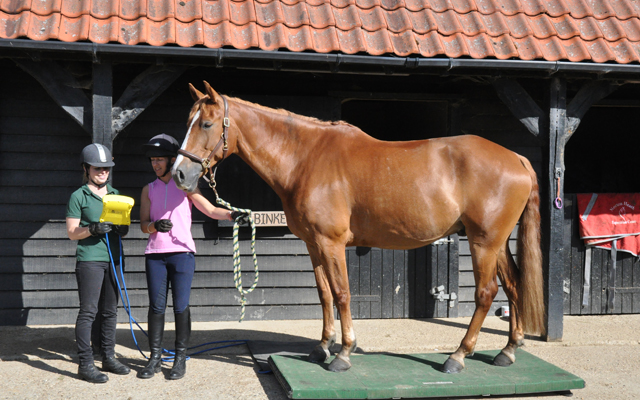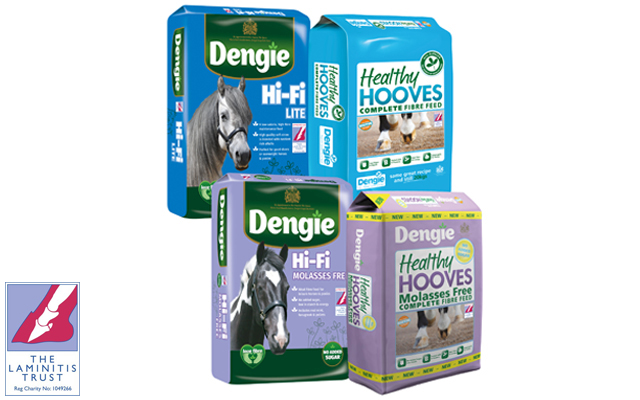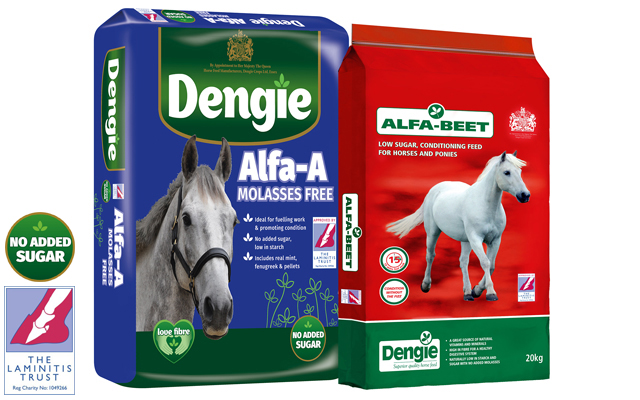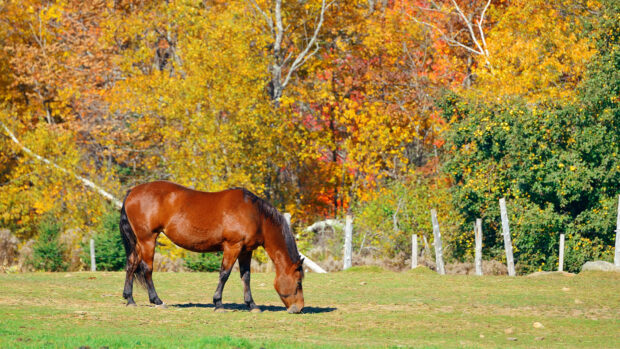Advertisement Feature
The National Equine Health Survey revealed last year that, of 15,000 horses and ponies included in the study, 23% were described as overweight – up from 16.9% the previous year. This reflects what the Dengie team are finding when they do yard visits too. Laminitis affected just over 6% of horses in the survey and, of these, 40% were affected for the first time whereas 60% had a repeat episode. This illustrates the fact that once a horse has had laminitis they are more prone to it happening again, which is why it is vital to try and stop it happening in the first place.
In a separate study carried out by the University of Liverpool, just 11% of the 546 respondents correctly identified overweight animals from photos. Being overweight predisposes horses and ponies to diseases such as laminitis, EMS and PPID (Cushing’s Disease)
Diet and Laminitis – The Link
The underlying endocrine problems created by EMS and PPID make the horse more vulnerable to laminitis. The trigger that ultimately results in the clinical signs of laminitis is often diet-related and is usually due to excessive consumption of sugar or starch. Grass and grass based forages such as hay are usually the main source of sugar, whereas the greatest source of starch is cereals. It is usually very easy to remove the starch from a horse’s ration but much harder to control sugar intake. However, it is vital to make the effort to do so if you want to win the “battle of the bulge” and keep your horse healthy.
Can you tell if your horse is overweight?
Condition scoring is used to assess whether a horse or pony is at the correct body weight. Describing a horse’s condition can be subjective and therefore a condition score sets out criteria to make the process more objective. A condition score of 3 (on the 0-5 scale) would be considered as optimum for most horses. Click here to learn how to condition score your horse or pony.
Key fat storing areas are:
Neck – excessive fat can be stored here, with the neck becoming ‘cresty’.

Ribs – you should be able to easily feel the ribs but not see them.
Topline – if fat is building up on the topline, the spine starts to be a gutter and if viewed from behind, the horse will have an apple-shaped bottom
Tail Head – the area at the top of the tail may start to feel soft and spongy if fat is accumulating there.
Why not get together with friends to organise a weighing and nutritional session at your yard? The team at Dengie can offer personalised diet plans to help you manage nutrition-related issues such as laminitis, PPID, gastric ulcers and weight loss.
What Can You Do?
If your horse is overweight, you need to start on a weight-loss plan. The main source of energy in most horses’ diets is grass. Limit turnout time, fit a grazing muzzle, strip graze or use a track system, click here for further advice. Alternatively, stable more and offer a low-calorie hay replacer, such as Dengie Hi-Fi Lite.
Calorie Count
Don’t be tempted to add treats to the feed – a sprinkle of mix easily becomes half a scoop a day which provides enough energy to support 20 minutes of schooling, if cubes are used, this increases to 50 minutes!
The healthier alternative is to use high fibre, low calorie feeds as they provide so much more chew time for far fewer calories. Dengie has four low-calorie feeds – Healthy Hooves Molasses Free, Hi-Fi Molasses Free, Healthy Hooves and Hi-Fi Lite – so there’s something to suit all tastes! Each of these products have been independently approved by The Laminitis Trust, are low in sugar, starch and energy.
What If He’s Working?
Alfa-A Molasses Free and Alfa-Beet are high-fibre feeds ideal for fuelling work and promoting condition. Both are naturally low in sugar and starch, contain no added sugar, are free from preservatives and approved by The Laminitis Trust.
For friendly feeding advice call the Dengie Feedline on 0845 345 5115 or visit www.dengie.com where you can chat-live to a nutritionist.
Does your horse or pony need to lose weight? For expert tips and advice enrol in the Dengie Fit Club








